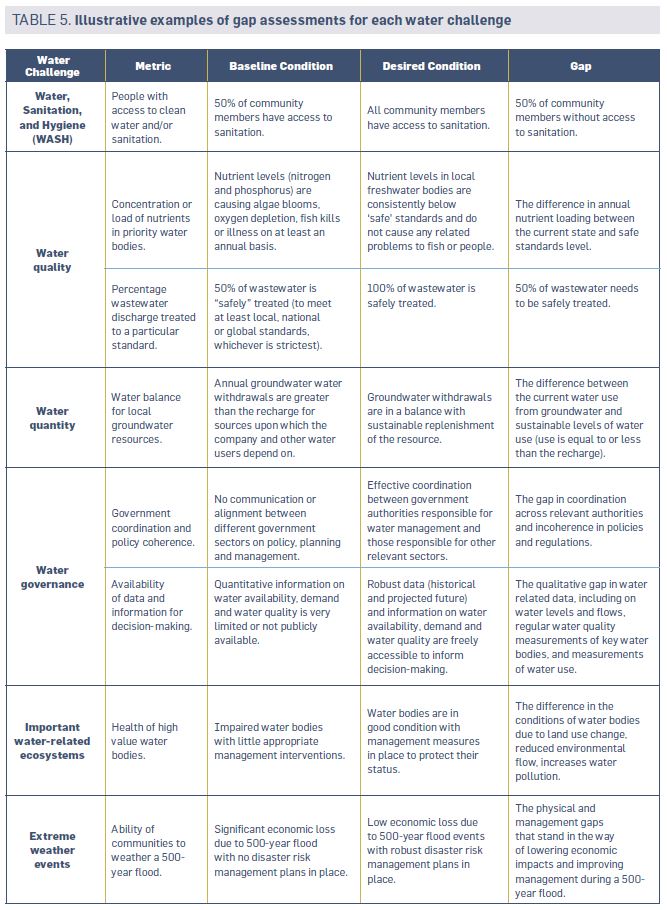Setting site water targets informed by the site’s contribution to the catchment’s water challenges and desired conditions helps ensure that the ambition of the targets is proportional to the magnitude of the water challenge the site is facing.
The desired condition is the strategic goal relating to the reduction or elimination of a water challenge within changing circumstances (i.e., climate change, land use change, infrastructure development, policy development, population growth). It helps to answer the question: what does success look like for the catchment?
To determine the desired condition for the priority water challenges(s) or target categories of SDG 6 (Clean Water and Sanitation), companies should leverage, where available, existing information provided by organizations managing water resources at a catchment, regional, subnational, or national level.
If there are no existing documents that capture the desired condition according to a relevant organization or collection of stakeholders, the company should develop a desired condition based on other available information and conversations with experts or key stakeholders, (i.e., river basin organizations, natural resource management agencies, other water users.) about their vision for a sustainable water future.
Upon understanding the desired condition of the catchment for the priority water challenges, determine the gap between the current and desired conditions. This will help the site understand the magnitude of the problem, which can help create the expected timeline and solutions required to meet the desired condition.
If data is available, it is recommended that the gap for each water challenge be quantitatively assessed as it sets the foundation for numeric water targets.

Once the gap between the current and desired condition for the priority shared water challenge(s) has been established, the site can then determine its contribution to meeting the desired condition and in turn inform the magnitude of the target(s). The site’s contribution refers to the site’s proportional responsibility towards the desired condition of a shared water challenge in a given catchment.
